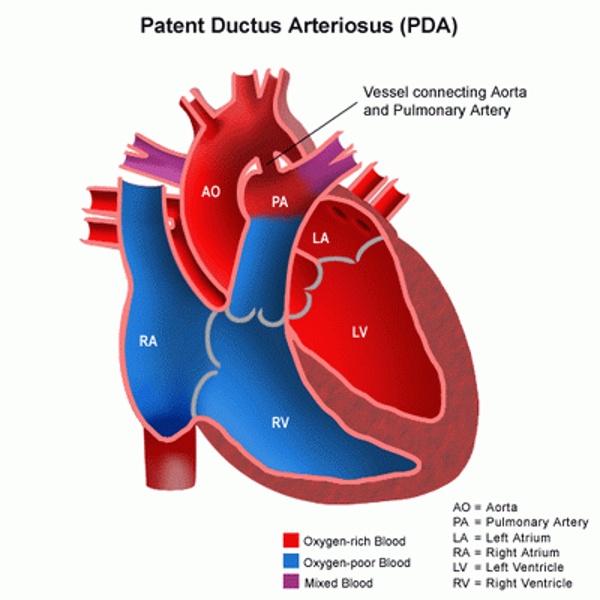Patent Ductus Arteriosus

Pathophysiology:
- Blood flows from aorta to the pulmonary artery, creating a left to right shunt, resulting in left atrium and ventricle overload
- Increased pulmonary blood flow can result in pulmonary hypertension and reversal of the shunt, which is known as Eisenmenger’s Syndrome. This results in flow of desaturated blood to the lower extremities.
Symptoms:
- Preterm neonate develop CHF and respiratory distress, Full term neonate may be asymptomatic
- Infants with Large left to right shunts develop symptoms of congestive heart failure such as tachypnea, tachycardia, poor feeding, and slow growth
- Children with small patent ductus are usually asymptomatic
Physical exam:
- Continuous murmur heard best at the left sternal border, left subclavicular thrill
- Widened pulse pressure and bounding peripheral pulses
- Poor growth
- Differential cyanosis
Treatment:
- Administration of Indomethacin / nsaids (prostaglandin inhibitor) to stimulate ductus to constrict
- Surgical division or ligation of the PDA
- Percutaneous device closure by PDA occluder device or coil